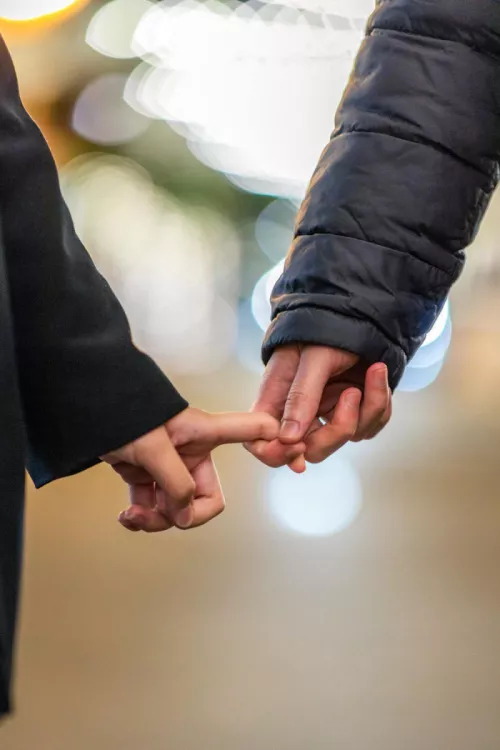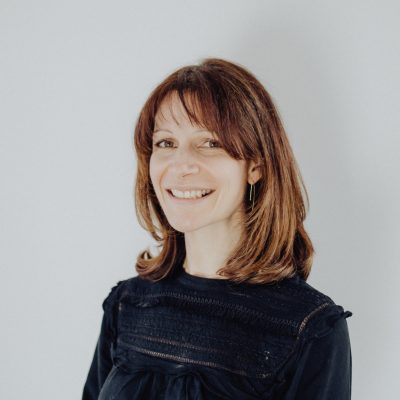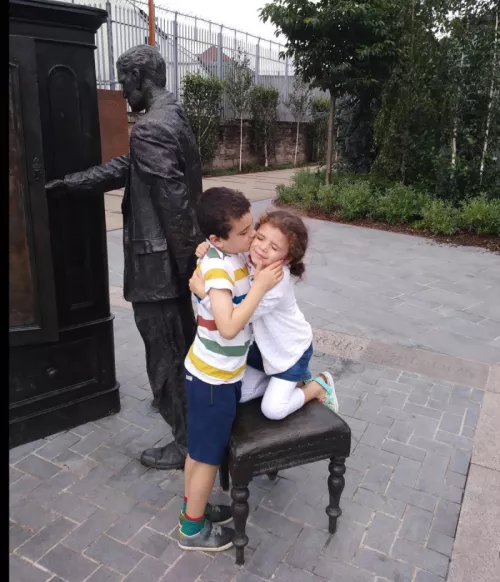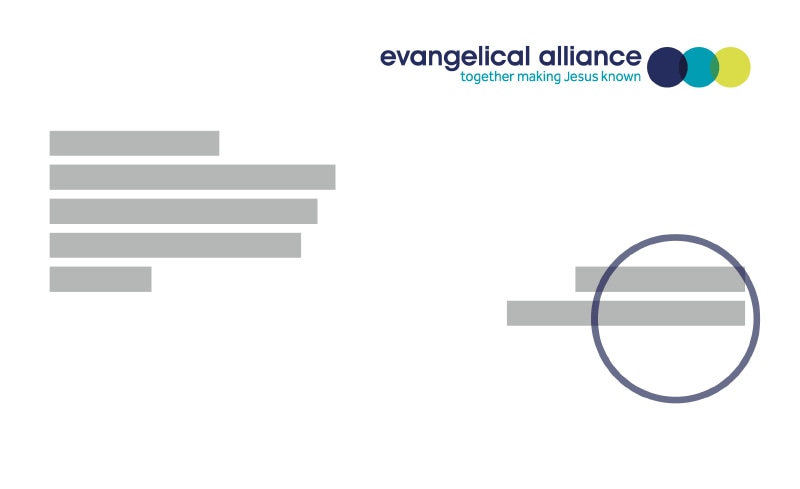“Micah doesn’t have the God-stamp in him,” declared Tabitha, my daughter (aged four at the time), as we exited her junior church service. For several weeks she had been exploring a series on the image of God. Micah is Tabitha’s older brother, who has a diagnosis of autism, severe learning disability, often challenging behaviours and a few other descriptors thrown in too.
“Micah can’t create anything, he just destroys it, he can’t figure hard things out and he can’t make friends with anyone – why can’t Micah come to church with us any more, because he doesn’t have the God-stamp?”
The following day as I succumbed to the back-to-school social media photo streaming, Tabitha insisted I also post a photo of Micah with captions to mark his new school year and current career aspirations.
“Well, what will Micah be when he grows up?” I asked her, prayerfully poised to explain that Micah’s future did not include a career in rocket engineering. Tabitha paused, pondered and proclaimed: “When Micah grows up, Micah will be my children’s uncle. I know Micah has the God-stamp.”
Tabitha was undergoing an internal grappling as she experienced the disconnect between her relationship and bond with her beloved brother and the structures of Christian teaching and community.
Dealing with the disconnect
On the one hand, she inhabits a Christian community whose theology and practice has sadly assimilated to the utilitarian value system of the world. The imago dei, the essence of our humanity, had been so far reduced that it excluded her brother’s humanity. On the other hand, Tabitha is a product of her cultural age, in which the defining driver of understanding humanity is an individual’s personal experience and emotion.
I have grappled with the same disconnect. I have scoured the systematic theology volumes, seeking to understand the humanity of my son, only to find more gaps than answers. I was offered an understanding of the imago dei that is less than full.
I can relate to Mark’s gospel accounts of the mothers (Mark 10) and the father (Mark 9) who approached the community of Jesus for His blessing and wisdom, only to experience more pain and frustration. There has been exclusion and pity, prayers for removal of impairment, hope-filled heavenly pointing to when Micah will be ‘normal’, or as one contributor mentioned at a recent roundtable I hosted on disability, that virtuous photo on the church website, marking them as‘inclusive’.
Without any meaningful Christian response to real, raw, lived experiences of disability (or race, gender, mental health or sexuality) many Christians have found a commonality within the woke currents of our cultural age. These voices identify multiple areas of human experience and seek to deconstruct false and oppressive frameworks through which society has perceived humanity in a way that is liberating and progressive. The human self, experience and emotions, rather than any external truth parameter, are perceived as the determining factors that tell us what it means to be human, with slogans like “you do you” or “I define me”.

"I have scoured the systematic theology volumes, seeking to understand the humanity of my son, only to find more gaps than answers. I was offered an understanding of the imago dei that is less than full."
A third way?
My own grappling with the disconnect between the Christian community and my disabled son has opened my eyes to the need for the church to ask and re-ask: what does it mean to be human? However, I struggle to accept the woke notion that disability is a social construct (referred to as “so-called disability”) and that my son is a “creative learner”, as several disability theologians suggested I consider.
Conservative, liberal, orthodox, progressive — these tribal camps have limited the discussions in such a way that neither position honours the full humanity of my son. Each community has failed to ask and answer the questions: what does it mean for Micah to be human, and what does this mean for our Christian faith and community?
I am keen that the church forge a third way in discussing the theology and practice around humanity for disability (and many other issues). So, how do we go forward?
1. Pause and ponder: Tabitha’s real-life experience grated with the teaching she received in church. She paused. She pondered. Her prophetic insight raised real questions, that demand real answers. The church must also pause and be willing to ponder alongside the Tabithas among us. The church cannot disregard the disconnection, real-life questions and pain, but should seek to understand a fuller theology and practice around humanity.
2. Posture: Tabitha perceived Micah as a person, as her brother and in relationship, not through his capacity to create, relate or rationalise. For too long, scripture has been read, and theology formulated, to those who experience disability, detached and disconnected from real-life experiences, rather than with and alongside. We must now position ourselves to read scripture with and alongside these men, women, boys and girls, in relationship with them. We must be ready to listen – not to respond – but to listen to understand. We must be ready to admit that we don’t even know what we don’t know and be willing to discover.
3. Parameters: Any exploration of humanity must fall within the biblical framework which perceives humanity as part of a cosmic order: we are creatures, inhabiting creation under the wilful power of our Creator. We do not self-determine. Rather, who, what, why, where and how we are as human beings are determined by whose we are.
Therefore, we understand humanity and every human experience (not just disability) within the biblical framework – within the reality of both the Genesis 1 creation act, as well as the Genesis 3 event.
- Genesis 1: the image of God is an identity gifted and a reality woven into the DNA of every human person. Each one bears the ‘God-stamp’ purely by their existence. The imago dei, the essence of humanity, is not achieved but ascribed, not earned but endowed. Deeper theological digging has shown me that Micah can bear God’s image, not despite his disability but through it.
- Genesis 3: the event that disrupted the cosmic harmony shattered our humanity. None of us are who we were designed to be. Micah’s disability, his needs and challenges, might be quickly detected as an impact of the fall, whereas I can conceal and cover my fragility, shame and dysfunctions. Deeper theological digging into Micah’s disability has revealed to me, in new ways, my own shattered humanity.
4. People of God: the cosmic disruption has not just shattered the divine design for the individual experience of humanity, but it has also led to the division of humanity as community. Communities and societies are rife with power structures that devalue and dehumanise the disabled community.
Inclusion is the justice-driven cultural buzzword that seeks to respond to these divisions. But inclusion does not shake the remnants of a deeply engrained power dynamic in which those who are on the inside need to be persuaded to allow those on the outside to enter in.
The biblical vision for the church is much more radical than inclusion; and so it is within the church, as the church and in the fullness of church, that we raise the question of disability in this third way, and seek to understand at community level what it means to be human.
As Paul unpacks the meaning of church, he identifies the social divisions of his cultural age: ethnicity (Jew/Greek), sex (male/female) and social status (slave/free). Although these distinctive human categories remain, in the community of the church they no longer cause division. There is an equality, mutuality, unity and koinonia (Greek for fellowship). Paul declares that all are one in Christ Jesus.
It is through the incarnate person and work of King Jesus that the birthing of this new kind of people is brought about. Sharing in our union to His person, we are a re-imaged, recreated humanity. We are His body, the church. As such, we submit to Christ our head through His word and we submit to each other. Together, in mutuality, we subject our shared human experiences to His design for humanity and human community.
In this community, the social divisions and power structures of the world are transformed, broken down and replaced by a new social order in which we bear the image of our creator, not just as individuals but as a body and a family. We are His people who not only speak of the imago dei but enact it and make it known. The church community rehumanises those who society has dehumanised.
I do not expect Micah’s disability to be removed. I do not expect the church to have all the elusive answers about Micah. Nobody else seems to have them! But I expect his‘God-stamp’ to be recognised, to be formulated, celebrated and enacted as we journey together in the new community of Christ.
When Micah grows up, he will be Tabitha’s children’s uncle. What about in my church community – will he be your friend and your brother? Can you learn from him? Will he find a place at your table and in your life? Will you give him the dignity of time and relationship?
Our Christian communities’ understanding, practice and values must undergo a radical reframing if we are to respond biblically to the questions posed by the most profoundly disabled man, woman, boy, girl and their families: what does it mean to be human?
This is the third way — the way we the church become the radically conservative, liberating orthodox, progressive and transforming people of God; the kind of people who are ready to ask and answer with, alongside and for those with a disability (and other human experiences) in word, deed and community: what does it mean to be human? What does it mean that Micah bears the‘God-stamp’?
"Our Christian communities’ understanding, practice and values must undergo a radical reframing if we are to respond biblically to the questions posed by the most profoundly disabled man, woman, boy, girl and their families: what does it mean to be human?"



